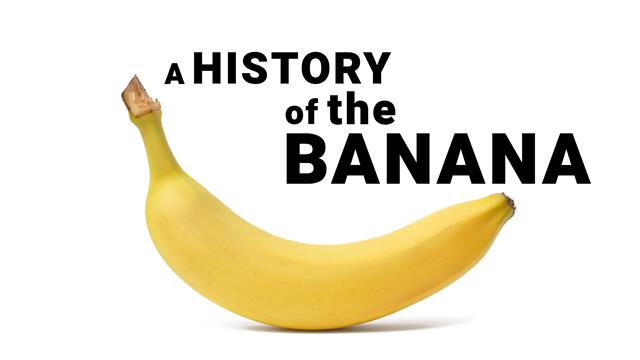Imagining the banana of the future

|
0:00
|
|
|
|
|
1:45
|
PUBLISHED
The banana has conquered land. It has conquered governments. But so far, it hasn’t been able to conquer its own biological limitations. And nowhere was this more apparent than—of all places—at the 2016 International Banana Congress.
Every few years, banana experts worldwide gather in one place to share information about their crop. This year, CORBANA, a Costa Rican association of banana experts, had arranged to host the meeting in San José, Costa Rica, the capital city of one of the most productive banana-growing countries on Earth. The location seemed to be the perfect place to assemble banana experts to discuss the crisis facing world banana crops, a fungal disease known as Fusarium wilt, or Panama Disease, which has been choking banana plantations for decades.
But several weeks before the scheduled April 2016 conference, it occurred to CORBANA officials that Costa Rica might actually be the worst place to host all of the world’s growers: People who attend the conference often come from all over the world, including the places where the disease has already taken hold. Visitors could bring in that terrifying fungus on their shoes, or in samples of fruit or field material.
That risk was deemed unacceptable, so at the last minute, CORBANA moved the meeting to Miami. “It was very surprising,” says Randy Ploetz, a University of Florida plant pathologist. “I think it reflected how nervous these people were.”
By “these people,” he means the banana growers of Central and South America, longtime banana giants who are now increasingly frightened by the fungus that could demolish their entire industry; and along with it, a huge slice of their countries’ economies.
Bananas are unlike almost all other fruits in that there’s only one variety, the Cavendish, available in every supermarket (see The Miracle of the Modern Banana.) Producing identical bananas requires they be cloned, and cloning gives every tree the same immune system. A disease that can take out one banana tree can realistically take out all of them.
The latest strain of Panama Disease isn’t new, but its spread has quickened in recent years. Since the 1990s, it spread across most of Eastern Asia, then to Africa, and then Europe. Considering North America has an unsuitable climate to produce bananas at commercial scale, that left South America as the only haven left to grow Cavendish bananas—but not for long. One fruit researcher I talked to called its arrival in the Western Hemisphere “inevitable.” Another called the banana industry “a long-term train wreck.”
Trying to limit the spread of biological material from infecting a cloned species can be like trying to stop a wildfire with a few dozen spray bottles. Globalization of people and products has lead some researchers to think that Panama disease has probably already arrived in South America. It could take decades to infect the entire continent, but the first domino in a long series may have already been toppled.
So far, Panama Disease can’t be stopped. But there is strategy to deal with it. In the 1960s when an earlier strain of the disease struck Panama, Costa Rica and Honduras, the countries responded by abandoning their market leader, the once-popular Gros Michel (a.k.a. Big Mike), in favor of the then-immune Cavendish. After half a century, some banana growers are hoping the industry can nimbly transition to a third-generation banana. “Fifty years later, we have much more technology and tools to overcome this disease,” says Jorge Sauma, chief executive of CORBANA in Costa Rica.
So what will tomorrow’s bananas look like? It depends who you ask. One low-hanging strategy is to create a somaclonal variation of the Cavendish—a hybridized sibling that’s similar to the Cavendish but not identical. It wouldn’t be entirely immune to Fusarium wilt, but it could keep the industry afloat.
Another option is a genetically modified banana using emerging CRISPR gene editing technology to rewrite the Cavendish’s genetic code to resist specific diseases and pests. Researchers at UC Davis and in the Netherlands are trying the opposite, as well: studying the genetic code of the fungus to learn how to stop it.
And then there’s the third option—the wild card—of stumbling upon an entirely new banana. In Southeast Asia, where bananas were first domesticated, this isn’t entirely far-fetched; there are hundreds of banana varieties, one of which could follow the Cavendish the way the Cavendish followed the Gros Michel.

